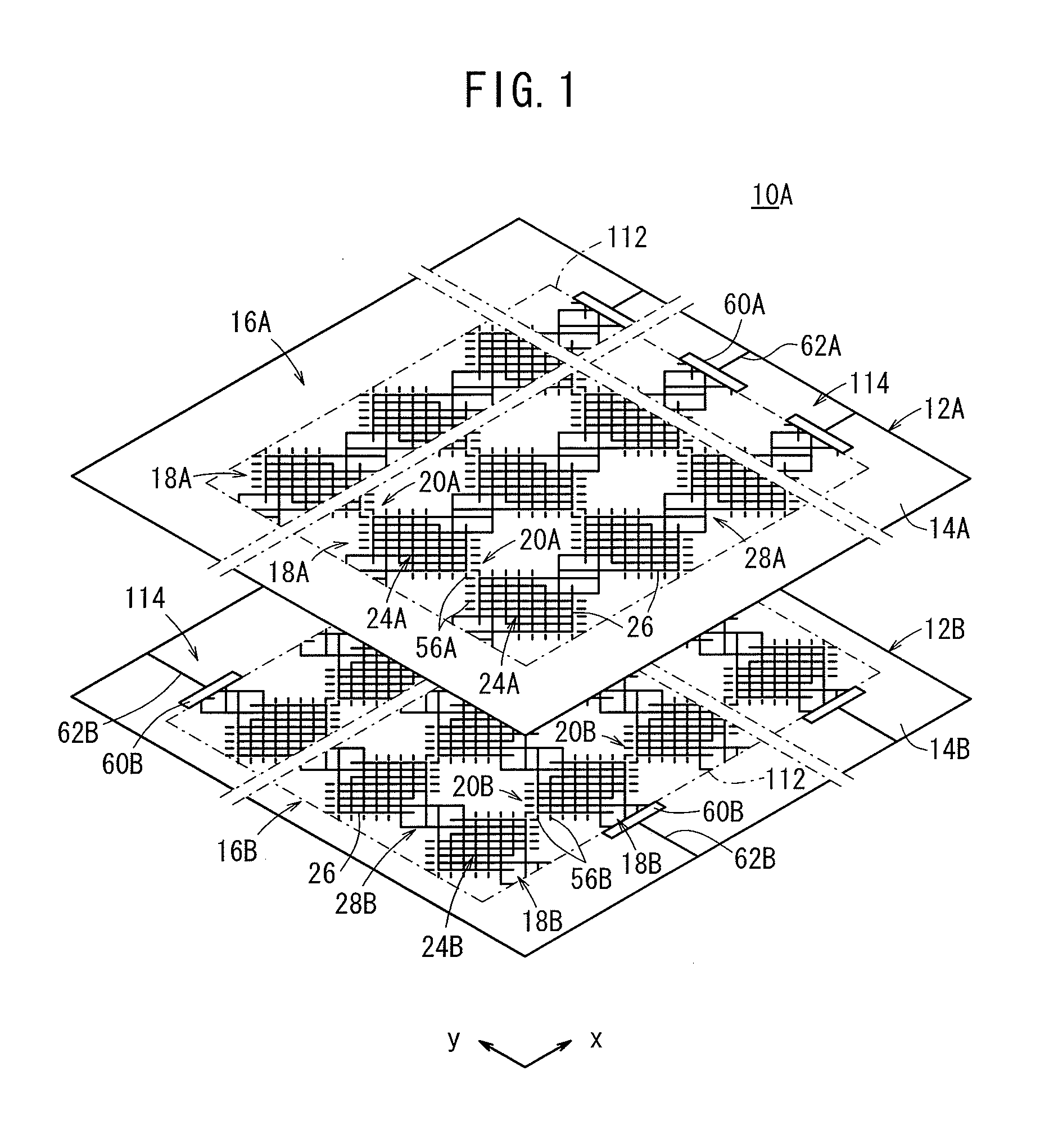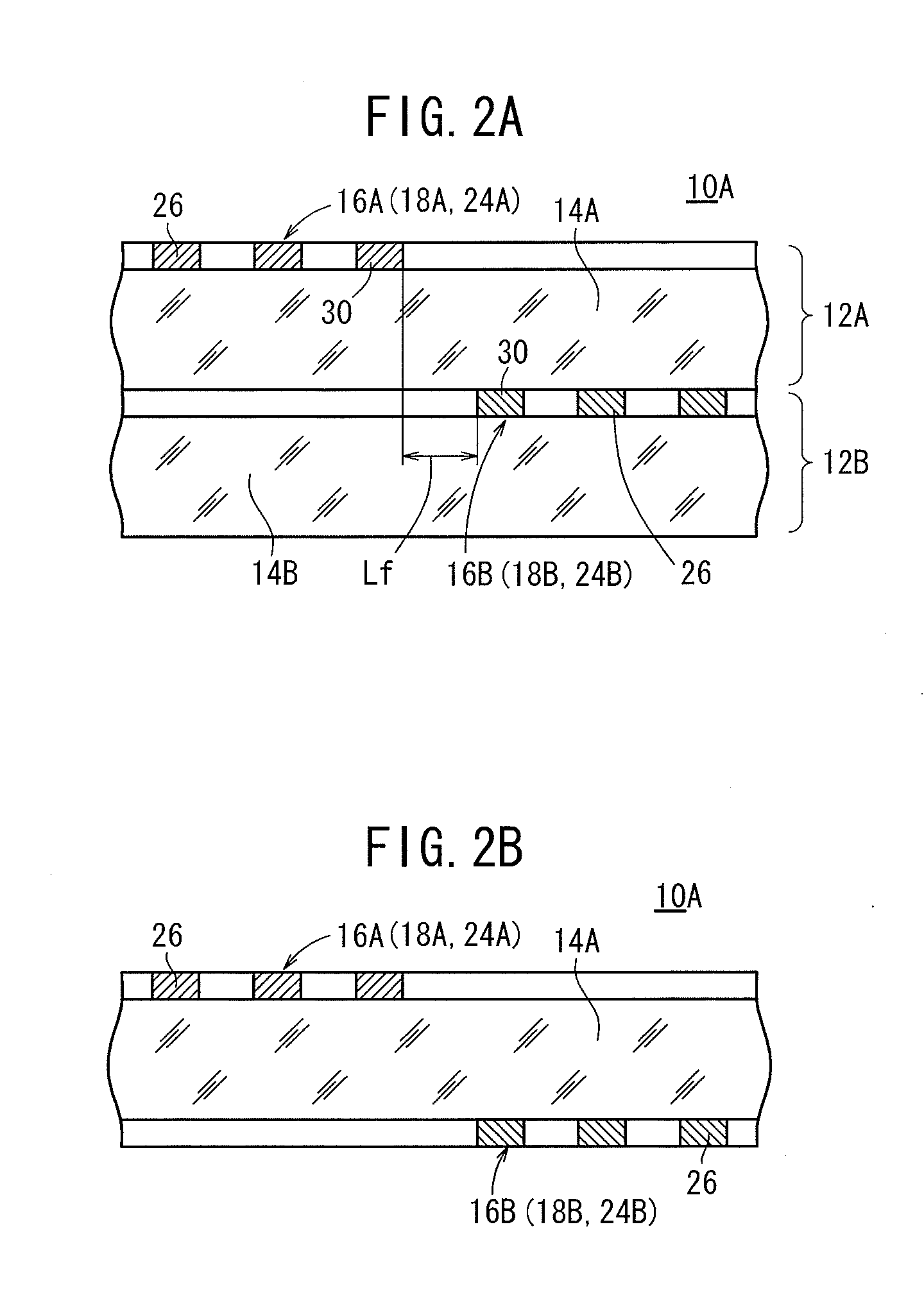Conductive sheet and capacitive touch panel
a capacitive touch panel and conductive sheet technology, applied in the direction of electronic switching, pulse technique, instruments, etc., can solve the problems of low current transfer rate, long response time, low response speed, etc., to improve touch position detection sensitivity, reduce the probability of complete disconnection, and improve visibility
- Summary
- Abstract
- Description
- Claims
- Application Information
AI Technical Summary
Benefits of technology
Problems solved by technology
Method used
Image
Examples
examples
[0290]The present invention will be described more specifically below with reference to Examples. Materials, amounts, ratios, treatment contents, treatment procedures, and the like, used in Examples, may be appropriately changed without departing from the scope of the present invention. The following specific examples are therefore to be considered in all respects as illustrative and not restrictive.
first example
[0291]In First Example, 100 first conductive sheets 12A and 100 second conductive sheets 12B were produced by the following treatments. The thin metal wires had a line width of 1 μm, and the small lattices 26 had a side length of 100 μm.
(Photosensitive Silver Halide Material)
[0292]An emulsion containing an aqueous medium, a gelatin, and silver iodobromochloride particles was prepared. The amount of the gelatin was 10.0 g per 150 g of Ag, and the silver iodobromochloride particles had an I content of 0.2 mol %, a Br content of 40 mol %, and an average spherical equivalent diameter of 0.1 μm.
[0293]K3Rh2Br9 and K2IrCl6 were added to the emulsion at a concentration of 10−7 mol / mol-silver to dope the silver bromide particles with Rh and Ir ions. Na2PdCl4 was further added to the emulsion, and the resultant emulsion was subjected to gold-sulfur sensitization using chlorauric acid and sodium thiosulfate. The emulsion and a gelatin hardening agent were applied to a first transparent substra...
second example
[0304]Conductive sheet laminates of Examples 1 to 9 were produced respectively. The surface resistance and the transmittance of each conductive sheet were measured, and the moire and the visibility of each conductive sheet were evaluated. The components, measurement results, and evaluation results of Examples 1 to 9 are shown in Table 3.
[0305]The first conductive sheets 12A and the second conductive sheets 12B of Examples 1 to 9 were produced in the same manner as First Example.
PUM
 Login to View More
Login to View More Abstract
Description
Claims
Application Information
 Login to View More
Login to View More - R&D
- Intellectual Property
- Life Sciences
- Materials
- Tech Scout
- Unparalleled Data Quality
- Higher Quality Content
- 60% Fewer Hallucinations
Browse by: Latest US Patents, China's latest patents, Technical Efficacy Thesaurus, Application Domain, Technology Topic, Popular Technical Reports.
© 2025 PatSnap. All rights reserved.Legal|Privacy policy|Modern Slavery Act Transparency Statement|Sitemap|About US| Contact US: help@patsnap.com



